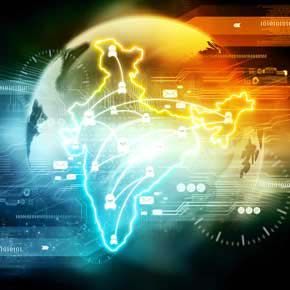Using India as a case, this Asia Business Council briefing looks at how the use of digital technology by the government and private sector is helping to change society, largely for the better. It explores how digital technology has enabled more people to access government benefits and expand economic opportunities in ways that were elusive even a decade ago. Cheap broadband, cheap storage space, the cloud, and widespread availability of smartphones present new opportunities for greater inclusiveness of growth. In India, because of deregulation and hyper-competition among telecom operators, data is almost free. The adoption of 5G cellular (trials of which will be conducted in late 2019), with its greatly enhanced network speed and capability for data transmission, has the potential to amplify these benefits.
The research highlights areas where India’s digital strategy has enabled government and private sector solutions to reach poorer people, who historically have been largely shut out from the benefits of globalization. The foundational technology that acts as a key driver of this change is Aadhaar, India’s biometric-based digital identification system, which has received almost universal adoption by India’s 1.3 billion citizens, and India Stack, a complementary set of enabling technologies. Through Aadhaar, India has enabled people to verify their identity in order to access basic services including receiving government benefits, opening bank accounts, and applying for loans. India’s relatively open markets and India Stack’s open application programming interface (API) allow private companies to write software for the system and leverage its capabilities.
Digital technology has enabled broader populations to participate in the economy in other sectors as well. In agriculture, which employs about half of India’s population, farmers are able to use precision agriculture applications to better manage their harvests and prepare for extreme weather. Digital marketplaces help them exercise more control over how they market and sell their crops. In education, technology-enabled platforms are helping to deliver a wide variety of curricula to broader populations and lessons tailored to varied student needs. And new methods help students and current workers prepare for an increasingly technology-driven economy. In healthcare, technology could narrow the urban-rural divide in quality and availability of care, ensuring more accurate and efficient diagnoses. In some cases, as this briefing shows, hybrid models emerge that combine high- and low-tech approaches, as with delivery of medical care in rural areas.
By putting in place forward-thinking technology infrastructure and harnessing the power of digital technology, India has set the stage for continued improvement in economic and social well-being and at the same time opened new markets for various sectors.

